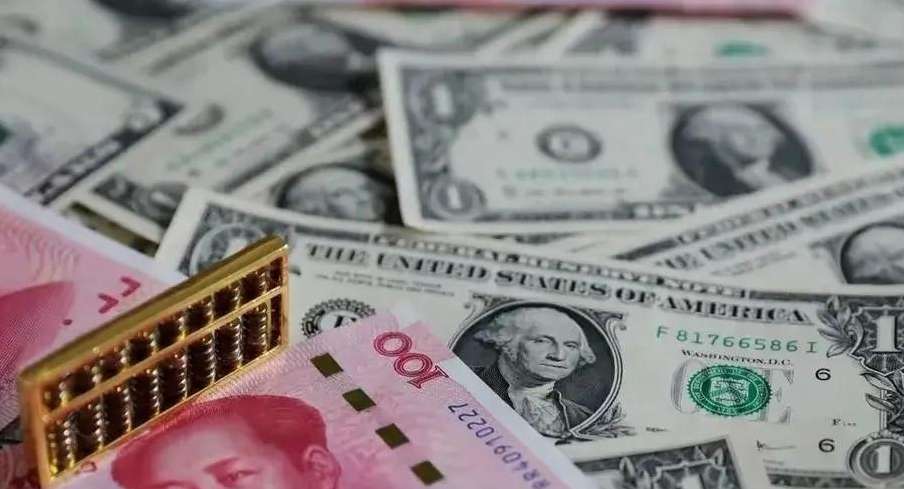US Corporate Defaults Fuel Bankruptcy Spike
Advertisements
The landscape of American business appears to be shifting dramatically as data increasingly shows a rise in corporate debt defaults, leading to an alarming increase in the number of bankruptcies. Various factors, including soaring interest rates, rampant inflation, and a noticeable drop in consumer spending, have all contributed to this trend. Analysts suggest that as expectations of interest rate cuts by the Federal Reserve fade, the negative impacts of high rates on corporate debt levels will persist, warranting a careful examination of systemic financial risks that may lie ahead.
The statistics are stark. The latest report from S&P Global Market Intelligence revealed that, as of 2024, 694 companies with significant assets have filed for bankruptcy, eclipsing the figures from previous years—635 in 2023 and 638 in 2020—and marking the highest number recorded in over a decade. The only other period with higher bankruptcy rates was in 2010, following the financial crisis.
A Reuters report cites figures from the Administrative Office of the U.S. Courts that show bankruptcy filings surged by 33.5% in the 12 months leading up to September 30, 2024. The hardest-hit sectors include healthcare, automotive, leisure and hospitality, and retail, illustrating the widespread nature of this crisis.
The driving forces behind this significant uptick in corporate failures remain multifaceted. As reported by both American and British journalists, the interaction of high interest rates, inflationary pressures, rising labor costs, and weakened consumer demand in the aftermath of the pandemic has created a challenging climate for corporations. With government-sponsored economic stimulus measures from the COVID-19 pandemic now fading, many companies reliant on discretionary consumer spending are feeling the pinch.
Ron Meisler, a partner in the restructuring practice at Sidley Austin LLP, pointed to the volatility of federal policies and healthcare reimbursement practices that particularly jeopardize highly indebted or niche-market healthcare companies. Furthermore, businesses that experienced meteoric growth during the pandemic, such as mask manufacturers, now find themselves in precarious positions due to the waning unique demand.
The automotive industry faces its own crises, as its dependence on international parts supply chains leaves it vulnerable to fluctuations, particularly with the incoming presidential administration advocating for tariffs on imported goods. S&P Global estimates that these tariffs may inflict severe financial stress on U.S. auto parts suppliers, potentially resulting in losses up to 17% of the total annual core profit for both American and European automobile manufacturers.

Moreover, inflation has driven up costs for labor, materials, and rents, further stunting growth in the leisure and retail sectors. As consumers increasingly gravitate toward online shopping, traditional brick-and-mortar retailers are witnessing a transformation that has accelerated due to these pressures.
The Federal Reserve's monetary policy approach is also a crucial factor in this evolving narrative. Despite initiating a sequence of interest rate cuts since September 2024—totaling a 100 basis point reduction—analysts warn that the pace at which these cuts unfold may slow considerably. Fresh data revealed that by the third quarter of 2024, the total debt of non-financial U.S. companies climbed to an all-time high of $8.453 trillion, with weakened interest coverage ratios signaling distress.
Although the consumer price index (CPI) for November 2024 saw a month-over-month increase of 0.3%, maintaining a level above the Fed's 2% target, other economic data points have kept the Fed’s rate-cut expectations in check. The Services Index, for instance, rose higher than anticipated, suggesting a resilient economy, while the unemployment rate dipped to 4.1%, with non-farm payrolls showing the highest job growth since March of the previous year.
Analysts feel the robust performance of various economic indicators diminishes the likelihood of aggressive rate cuts, potentially saddling consumers and businesses with higher costs, the very outcome that many had hoped would ease through Fed interventions. Furthermore, the burden of high interest rates continues to inflate corporate borrowing costs, exacerbating repayment pressures on existing debts.
Concerns surrounding systemic financial risks mount as reports from major credit rating agencies reveal that corporate debt levels in the United States have reached worrisome heights and continue to climb. According to a report by Moody's, the loan default rate among high-risk companies, predominantly in the U.S., soared to 7.2% as of October 2024—its highest since late 2020. Analysts forecast that the pressure imposed by high interest rates may extend the upward trend in corporate debt defaults well into 2025.
Within the soaring bankruptcy statistics, the troubling reality emerges that dozens of U.S. companies initiating bankruptcy proceedings carried debts exceeding $1 billion. Additionally, data from Fitch Ratings indicates a rising number of corporations opting for out-of-court measures to evade formal bankruptcy, a trend termed debt management, which has increasingly occupied the landscape of corporate debt defaults.
Experts warn that the escalation of corporate defaults may amplify systemic risks within the financial sector. Financial institutions, having accumulated vast quantities of corporate debt, could suffer enormous losses if a significant number of businesses were to fail, potentially triggering chaos within the financial markets. This cycle of corporate defaults could lead to tighter credit conditions, further hindering business financing opportunities, while also contributing to rising unemployment rates and diminished consumer confidence—factors that could impose broader adverse impacts on the economy.
A confluence of these elements underscores a challenging future for American businesses. As the fallout from these high default rates permeates various sectors of the economy, the ramifications are likely to extend well beyond corporate walls, impacting everyday consumers and creating a ripple effect that could redefine the economic landscape for years to come.
Leave a Reply